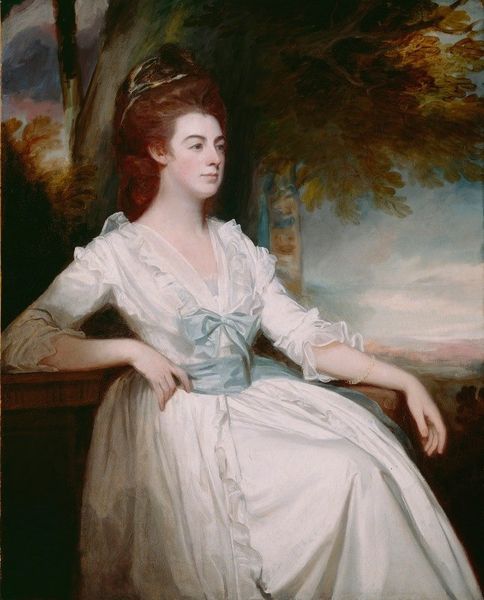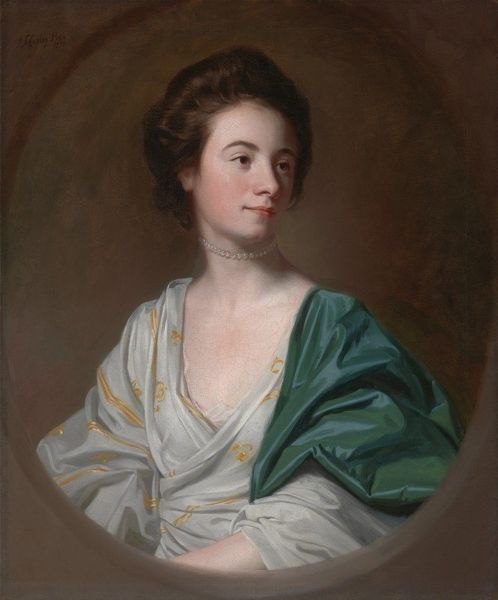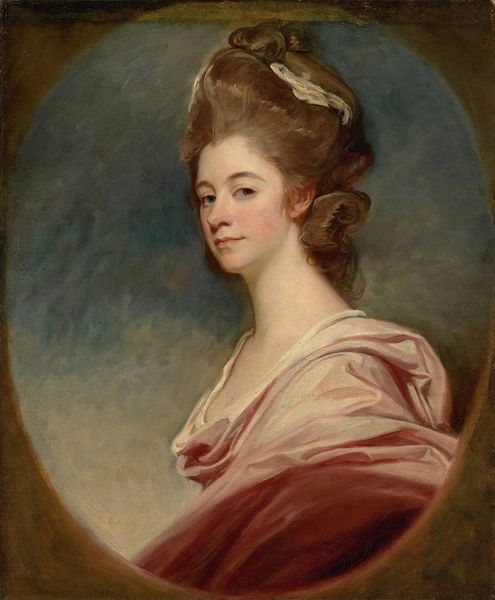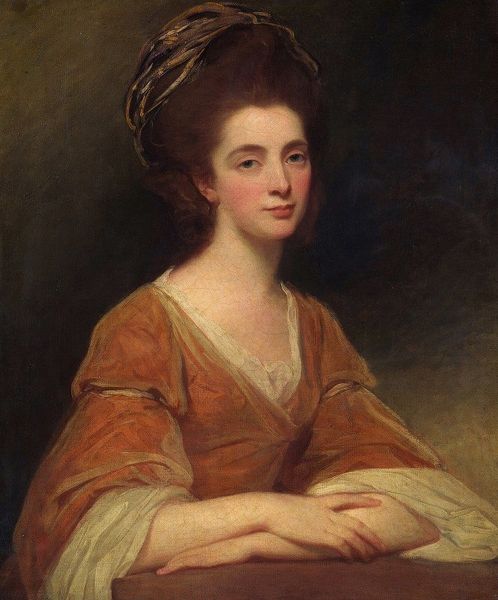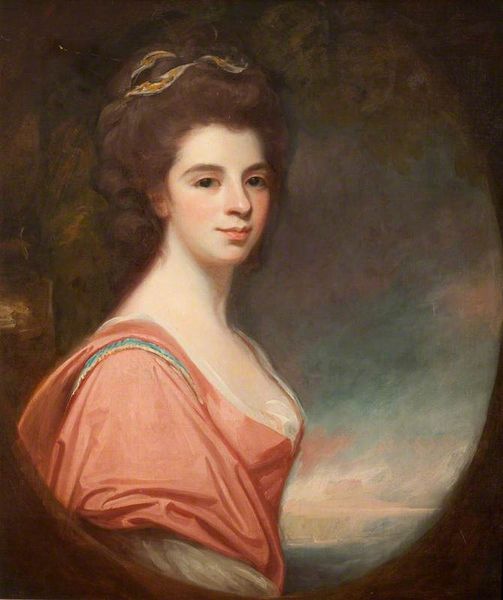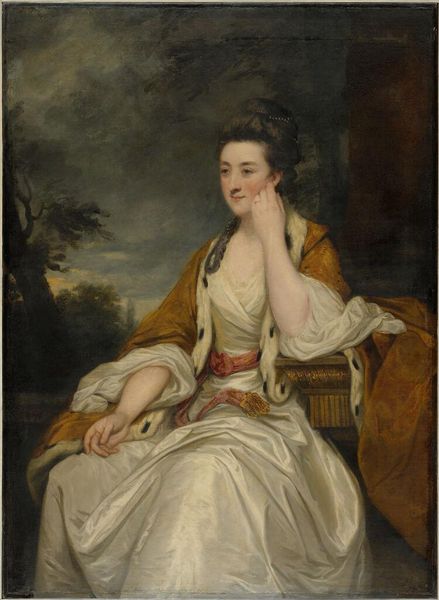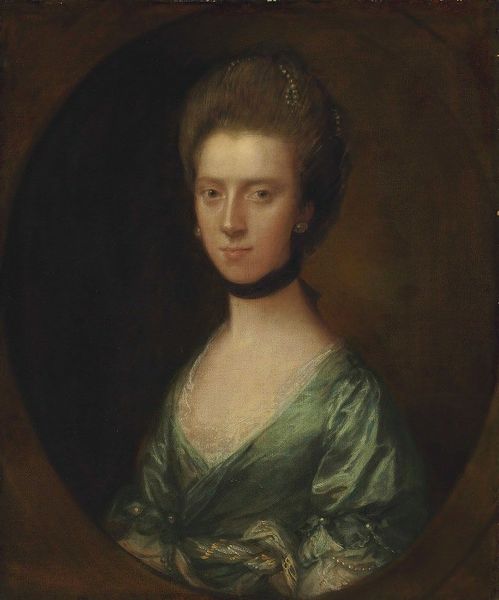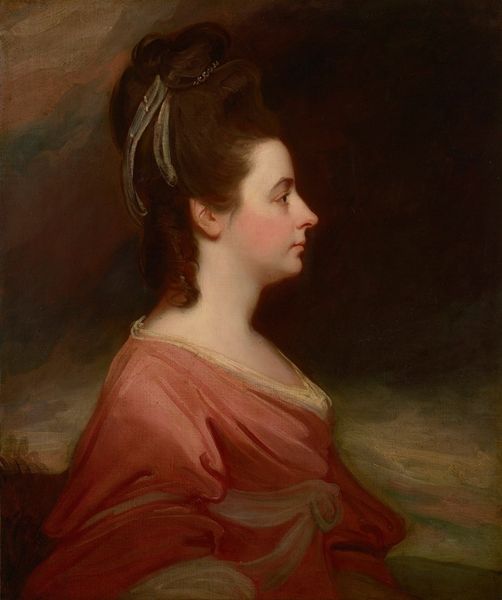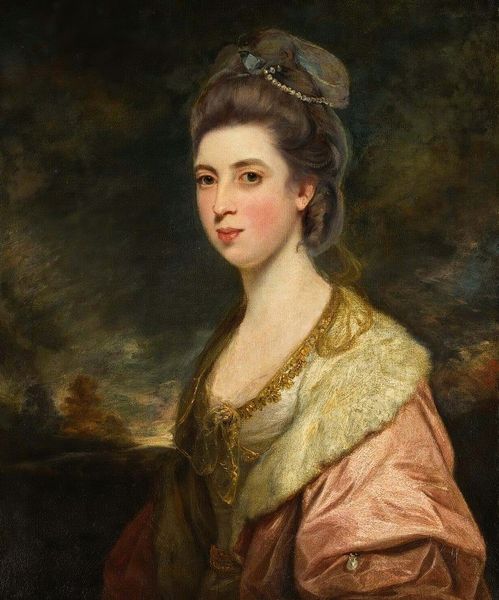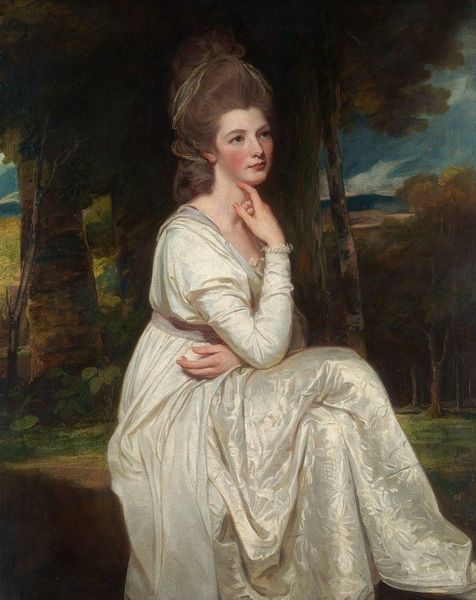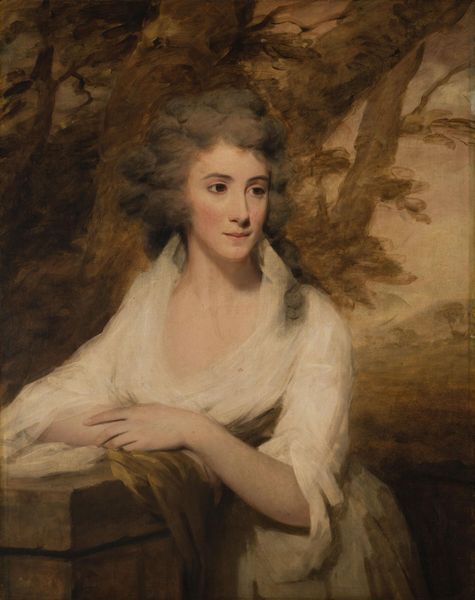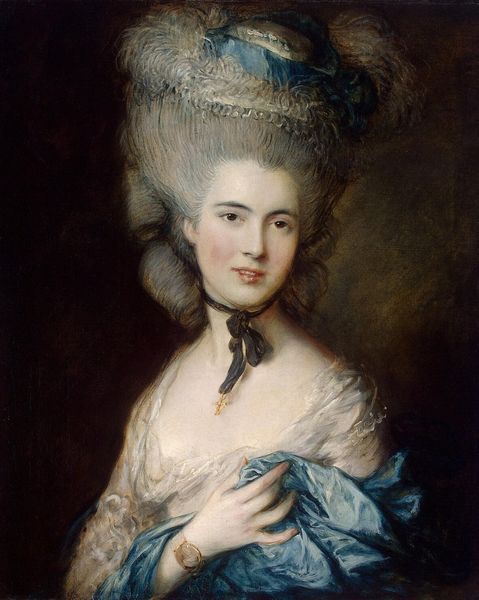
painting, oil-paint
#
figurative
#
painting
#
oil-paint
#
history-painting
#
rococo
Copyright: Public Domain: Artvee
Editor: Here we have a portrait of Elizabeth Kerr, Marchioness of Lothian, an oil painting by Joshua Reynolds, likely made between 1745 and 1780. I am immediately drawn to the fur stole. How does that animalistic detail impact the way we perceive the sitter? Curator: That's a fantastic observation! The fur piece, likely ermine, isn’t just a fashion statement. Historically, ermine symbolized purity and status, reserved for nobility. Reynolds uses it to signal the Marchioness’s position, subtly embedding her within a hierarchy. What else catches your eye in terms of symbolic cues? Editor: Well, she seems poised, perhaps even a little aloof. The turquoise silk is luxurious, but not overly extravagant. Curator: Exactly! Reynolds was masterful at controlling the symbolic language of his portraits. Her gaze, averted but not unfriendly, suggests modesty appropriate for a woman of her standing. Consider also the subdued background, and how it makes the figure more immediate, accessible even. In what ways might the artist use that background space as another symbolic clue about identity? Editor: Hmm, so he's not just showing us who she is but defining what it *means* to be her. Curator: Precisely! It’s not simply a record, but a careful construction of identity. We bring to it our cultural knowledge about colour, fabric, even about how portraiture itself conveys authority. Editor: That changes how I see the painting. It’s not just a pretty picture but a curated statement. Thanks for unpacking that! Curator: My pleasure! It is like re-reading history! The surface simplicity belies the complex layering of symbols that whisper stories of status and societal expectation.
Comments
No comments
Be the first to comment and join the conversation on the ultimate creative platform.
